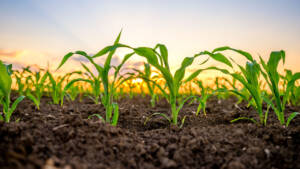Planning and executing a harvest efficiently requires organization, preparation, and attention to detail. Here are some simple ways to plan and execute your harvest:
1. Pre-Harvest Planning
a. Assess Crop Readiness
- Monitor Maturity: Regularly check crops for signs of maturity. Look for color changes, size, firmness, and other indicators specific to the crop.
- Use Predictive Tools: Utilize tools like Growing Degree Days (GDD) calculators or maturity charts to predict harvest times.
b. Prepare Equipment
- Inspect Equipment: Ensure all harvesting equipment (e.g., combines, tractors, harvesters) is in good working condition. Perform maintenance checks and repairs well in advance.
- Stock Up on Supplies: Gather necessary supplies such as containers, crates, bags, and tools for harvesting and storing crops.
c. Plan Labor
- Hire Seasonal Workers: If needed, hire and train seasonal workers ahead of time. Ensure they are familiar with harvesting techniques and safety protocols.
- Schedule Shifts: Create a labor schedule to ensure that you have enough hands available during peak harvest times.
2. Harvest Execution
a. Timing the Harvest
- Optimal Timing: Harvest during the coolest part of the day (early morning or late afternoon) to minimize heat stress on crops and workers.
- Weather Considerations: Monitor weather forecasts to avoid harvesting during adverse conditions such as rain, which can damage crops and complicate the process.
b. Harvest Techniques
- Gentle Handling: Handle crops gently to avoid bruising or damage. Use appropriate tools and techniques for each type of crop.
- Efficient Picking: Train workers to pick efficiently and consistently. Use strategies such as starting from the outer rows and working inward.
c. Sorting and Grading
- Quality Control: Sort and grade crops immediately after harvesting to separate high-quality produce from those with defects or damages.
- Packaging: Package crops according to market standards. Use proper containers that allow for adequate ventilation and protection during transport.
3. Post-Harvest Management
a. Storage
- Cool Storage: Store perishable crops in cool, well-ventilated areas to extend shelf life. Use refrigerators or cold storage facilities if available.
- Proper Stacking: Stack containers carefully to avoid crushing and ensure good air circulation.
b. Transport
- Transportation Plan: Arrange transportation in advance. Ensure vehicles are clean and suitable for transporting crops.
- Loading: Load crops carefully to prevent damage during transport. Use padding and secure containers to avoid shifting.
4. Documentation and Record-Keeping
- Harvest Records: Maintain detailed records of harvest dates, quantities, and quality. This information is valuable for future planning and market analysis.
- Labor Records: Keep track of labor hours and costs associated with the harvest to evaluate efficiency and budget for future harvests.
 5. Safety Measures
5. Safety Measures
- Worker Safety: Provide workers with appropriate safety gear such as gloves, hats, and protective clothing. Ensure they are aware of safety procedures and first aid measures.
- Equipment Safety: Ensure that all equipment is operated safely. Provide training on the proper use of machinery and tools.
6. Utilize Technology
- Harvest Management Software: Use software to plan and track the harvest process. Many apps offer features like task scheduling, inventory management, and data analysis.
- Drones and Sensors: Employ drones and sensors to monitor field conditions, identify areas ready for harvest, and assess crop health.
7. Post-Harvest Evaluation
- Review and Analyze: After the harvest, review the entire process. Identify what worked well and areas that need improvement.
- Feedback: Gather feedback from workers and other stakeholders to improve future harvests.
By following these steps, you can plan and execute your harvest more efficiently, ensuring that you maximize yield, maintain quality, and reduce waste.




